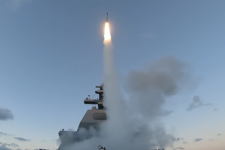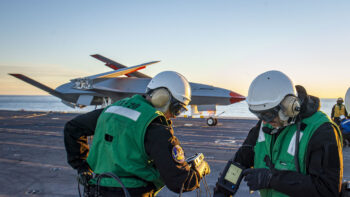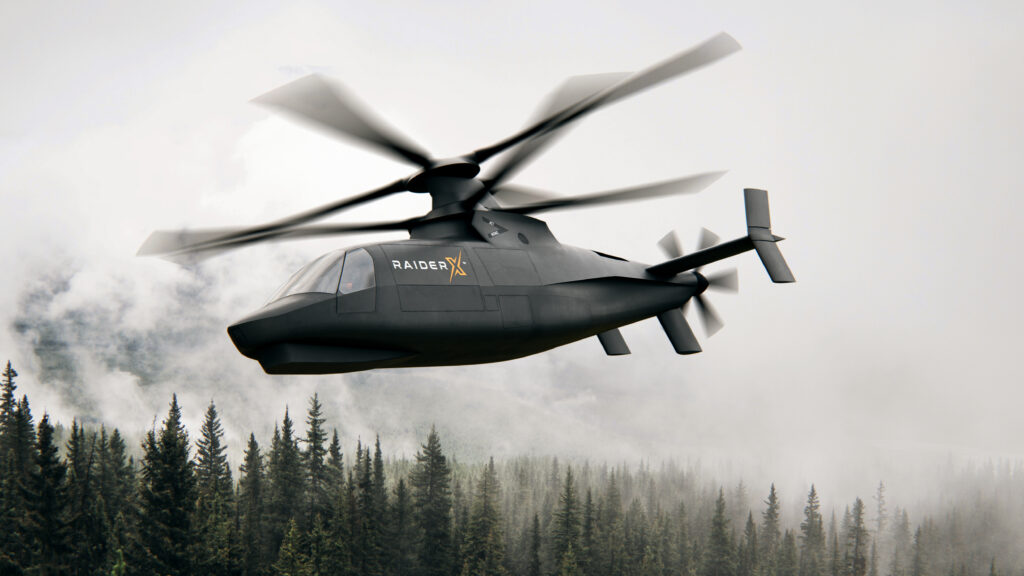
The Sikorsky Raider-X, Lockheed Martin’s proposed design for the Army’s Future Attack Reconnaissance Aircraft
WASHINGTON: After four decades of failed attempts to replace its Vietnam-vintage OH-58 Kiowa scout, next month the Army will choose two of five competing teams to build prototypes for a new Future Attack Reconnaissance Aircraft.
Those prototypes, in turn, will compete for a mass-production contract in a 2023 “fly off,” with deliveries no later than 2028. A new scout is urgently overdue as the US faces ever-more-sophisticated Russian and Chinese air defenses that can keep traditional aircraft at bay. But with limited budgets, the Army will have to pick and choose high-priority units to get FARA first, and the rest of the force will have to wait.
“We’ve got to look at, where are the most critical spots to bring capability,” said Brig. Gen. Michael McCurry, director of aviation for the Army Deputy Chief of Staff for operations and plans. The priority is the cutting-edge combat units that must break open sophisticated anti-aircraft defensives for the rest of the force to follow, he told me: “That penetrate force, that’s where FARA is going to go.”
Learning From the Past
Now, the Army has made its job easier in a couple of important ways. Perhaps most important, instead of the traditional dozens or hundreds of detailed technical specifications that hem in designers’ ingenuity, Future Vertical Lift director Brig. Gen. Walter Rugen told me, “we have very few critical attributes within our FARA spec.”
One huge thing that the Army is not asking for: stealth. Unlike the costly Boeing Comanche cancelled in 2006, the FARA won’t have to be shaped and coated to be impervious to radar – which is largely irrelevant to low-flying helicopters hiding behind hills, trees, or buildings, which are most often detected by the sound of their rotors, not by radar. Like the Comanche, advertised as a “digital quarterback,” FARA will act as an electronic hub for battlefield intelligence, collecting target data from drones and passing it to Army artillery, hypersonic missiles, and Air Force strike fighters – but network tech has come a long way since 2006, the year before the iPhone went on sale.
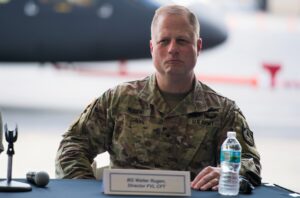
Brig. Gen. Walter Rugen
Finally, unlike the Comanche, FARA won’t be a conventional helicopter with a single main rotor and a small tail rotor for stability. The speed and range required to survive the future battlefield are greater than that classic set-up can achieve. That’s driven all four firms who’ve discussed their designs in public – Boeing has not revealed anything – to adopt innovative configurations the Army’s never fielded before. Only one of the designs, Sikorsky’s, is based on an existing aircraft that’s done actual flight tests.
But the Army is confident the competitors can deliver. In detailed modeling, Rugen said, “all those offerings are beating those [minimum] mission critical attributes that we’re trying towards.”
Congress actually cut the FARA budget for 2020 by $34 million. That won’t slow the program down, the Army has said, but it will reduce the amount of Government Furnished Equipment (GFE) the service can provide the contractors to build their prototypes around: weapons systems including a 20-millimeter autocannon and a missile launcher, Modular Open Systems Architecture (MOSA) electronics, and the GE Improved Turbine Engine. To simplify and speed up development, all the competitors are required to include these standard-issue systems in their design — but the aircraft they build around them are radically different.
Design shop AVX has proposed an aircraft with two helicopter-style main rotors for vertical takeoff, wings for extra lift, and a pair of their characteristic ducted fans for speed. AVX, founded by Bell alumni, has never built an actual aircraft. But it’s backed by the manufacturing might of the much larger L3Harris, a firm created by the merger of the 18th and 26th-largest defense contractors in the world (as per their 2019 rankings on the Defense News Top 100).
By contrast, Bell – part of Textron, No. 34 on the Top 100 – is a major builder of both military and commercial helicopters, as well as the revolutionary V-22 Osprey tiltrotor, from which the company’s contender for the Army’s future transport aircraft, the V-280, derives. Ironically, the Bell 360 Invictus is the most conservative-looking of the four known FARA designs: It’s a streamlined single-main-rotor helicopter (looking kind of like Comanche) with the addition of two short wings for extra lift. Inside the aircraft, though, Bell is using new fly-by-wire flight controls and other technologies developed for its civilian Bell 525.
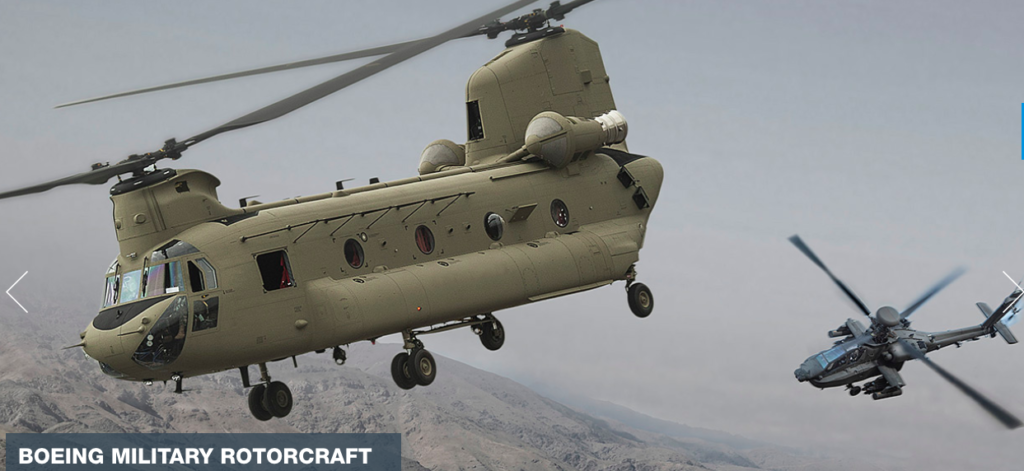
Boeing CH-47 Chinook (left) and AH-64 Apache (right) in flight
Aerospace giant Boeing – No. 2 of the top 100, counting its defense contracts alone – builds the Army’s current mainstay armored gunship, the AH-64 Apache; its heavy lifter, the CH-47 Chinook; and, with Bell, the V-22 tiltrotor. But Boeing, which built the stealthy Comanche, is so far in public-relations stealth mode on FARA, declining to discuss its design.
Karem Aerospace is another design shop with an excellent pedigree – its founder is the father of the Predator drone – but no track record of actually building an aircraft. However, it’s partnered with Northrop Grumman (No. 3 of the top 100) and Raytheon (No. 4) for this program, giving it serious manufacturing heft. The Karem AR-40 design has a unique combination of a single main rotor on top, a propeller at the tail that can swivel to act either as a tail rotor for stability or a pusher propeller for thrust, and wings that can tilt for the optimum aerodynamic angle in different modes of flight.
Last in the alphabet, comes Sikorsky, the helicopter division of the world’s biggest defense contract, Lockheed Martin. While Sikorsky’s Raider-X design hasn’t flown yet, it’s essentially a 20 percent larger version of the two S-97 Raiders the company built and flight-tested at its own expense. (One of them was totaled in the process, thankfully with no loss of life). And Sikorsky already knows how to upscale its compound helicopter technology, because there’s already an even bigger member of the family, the Sikorsky-Boeing SB>1 Defiant, now in flight tests for the Army’s Future Long-Range Assault Aircraft (FLRAA).
All these aircraft derive from the Collier Trophy-winning X2 and share its configuration: two main rotors on top, using ultra-rigid blades to provide maximum lift with minimum vibration at high speeds, and a single pusher propeller at the tail. Between the X2, the S-97, and the SB>1, Sikorsky’s configuration has been through far more flight testing than any of its competitors on FARA.
So which team has the best combination of innovative design, proven technology, and the manufacturing muscle to build it at a price the nation can afford? That’s a call the Army will make, and soon.














